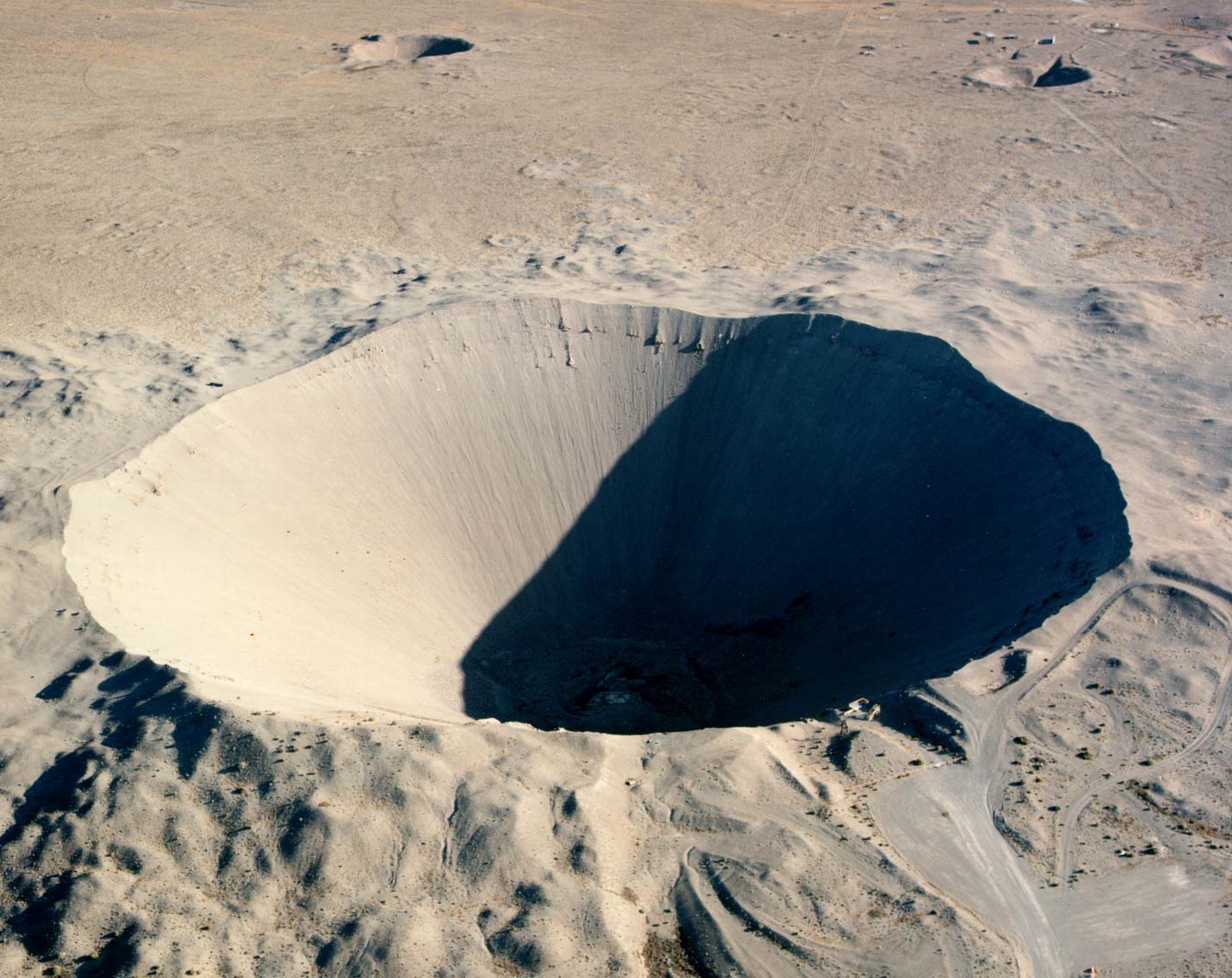Explosion crater on:
[Wikipedia]
[Google]
[Amazon]

 An explosion crater is a type of
An explosion crater is a type of

 An explosion crater is a type of
An explosion crater is a type of crater
A crater is a landform consisting of a hole or depression (geology), depression on a planetary surface, usually caused either by an object hitting the surface, or by geological activity on the planet. A crater has classically been described ...
formed when material is ejected from the surface of the ground by an explosion
An explosion is a rapid expansion in volume of a given amount of matter associated with an extreme outward release of energy, usually with the generation of high temperatures and release of high-pressure gases. Explosions may also be generated ...
at or immediately above or below the surface.
A crater is formed by an explosion through the displacement and ejection of material from the ground. It is typically bowl-shaped. High-pressure gas and shock wave
In physics, a shock wave (also spelled shockwave), or shock, is a type of propagating disturbance that moves faster than the local speed of sound in the medium. Like an ordinary wave, a shock wave carries energy and can propagate through a me ...
s cause three processes responsible for the creation of the crater:
* Plastic deformation of the ground.
* Projection of material (ejecta
Ejecta (; ) are particles ejected from an area. In volcanology, in particular, the term refers to particles including pyroclastic rock, pyroclastic materials (tephra) that came out of a explosive eruption, volcanic explosion and magma eruption v ...
) from the ground by the explosion.
* Spallation
Spallation is a process in which fragments of material (spall) are ejected from a body due to impact or stress. In the context of impact mechanics it describes ejection of material from a target during impact by a projectile. In planetary p ...
of the ground surface.
Two processes partially fill the crater back in:
* Fall-back of ejecta.
* Erosion and landslides of the crater lip and wall.P. W. Cooper. ''Explosives Engineering''. Wiley-VCH.
The relative importance of the five processes varies, depending on the height above or depth below the ground surface at which the explosion occurs and on the composition of the ground.
Examples
One of the largest explosion craters in Germany is in the borough ofPrüm
Prüm () is a town in the Westeifel (Rhineland-Palatinate), Germany. Formerly a district capital, today it is the administrative seat of the ''Verbandsgemeinde'' ("collective municipality") Prüm (Verbandsgemeinde), Prüm.
Geography
Prüm lies o ...
. It was caused by a huge explosion in 1949, in which an ammunition depot
Supply depots are a type of military installation used by militaries to store battlefield supplies temporarily on or near the front lines until they can be distributed to military units. Supply depots are responsible for nearly all other types of ...
exploded due to unknown causes and large parts of the town were destroyed.
See also
*Hydrothermal explosion
Hydrothermal explosions occur when superheated water trapped below the surface of the Earth rapidly converts from liquid to steam, violently disrupting the confining rock. Boiling water, steam, mud, and rock fragments are ejected over an area of ...
, caused by rapid heating of groundwater by volcanic sources
*Maar
A maar is a broad, low-relief volcanic crater caused by a phreatomagmatic eruption (an explosion which occurs when groundwater comes into contact with hot lava or magma). A maar characteristically fills with water to form a relatively shallow ...
, a crater caused by a volcanic explosion
*Pseudocrater
A rootless cone, also formerly called a pseudocrater, is a volcanic landform which resembles a true volcanic crater, but differs in that it is not an actual vent from which lava has erupted. They are characterised by the absence of any magma condu ...
, a volcanic crater formed by a steam explosion
* Subsidence crater, a depression in the ground formed by collapse of a void below the surface
*Impact crater
An impact crater is a depression (geology), depression in the surface of a solid astronomical body formed by the hypervelocity impact event, impact of a smaller object. In contrast to volcanic craters, which result from explosion or internal c ...
, a depression formed by excavation following a hypervelocity impact
*Volcanic crater
A volcanic crater is an approximately circular depression in the ground caused by volcanic activity. It is typically a bowl-shaped feature containing one or more vents. During volcanic eruptions, molten magma and volcanic gases rise from an ...
* Gas emission crater
References
{{explosive-stub